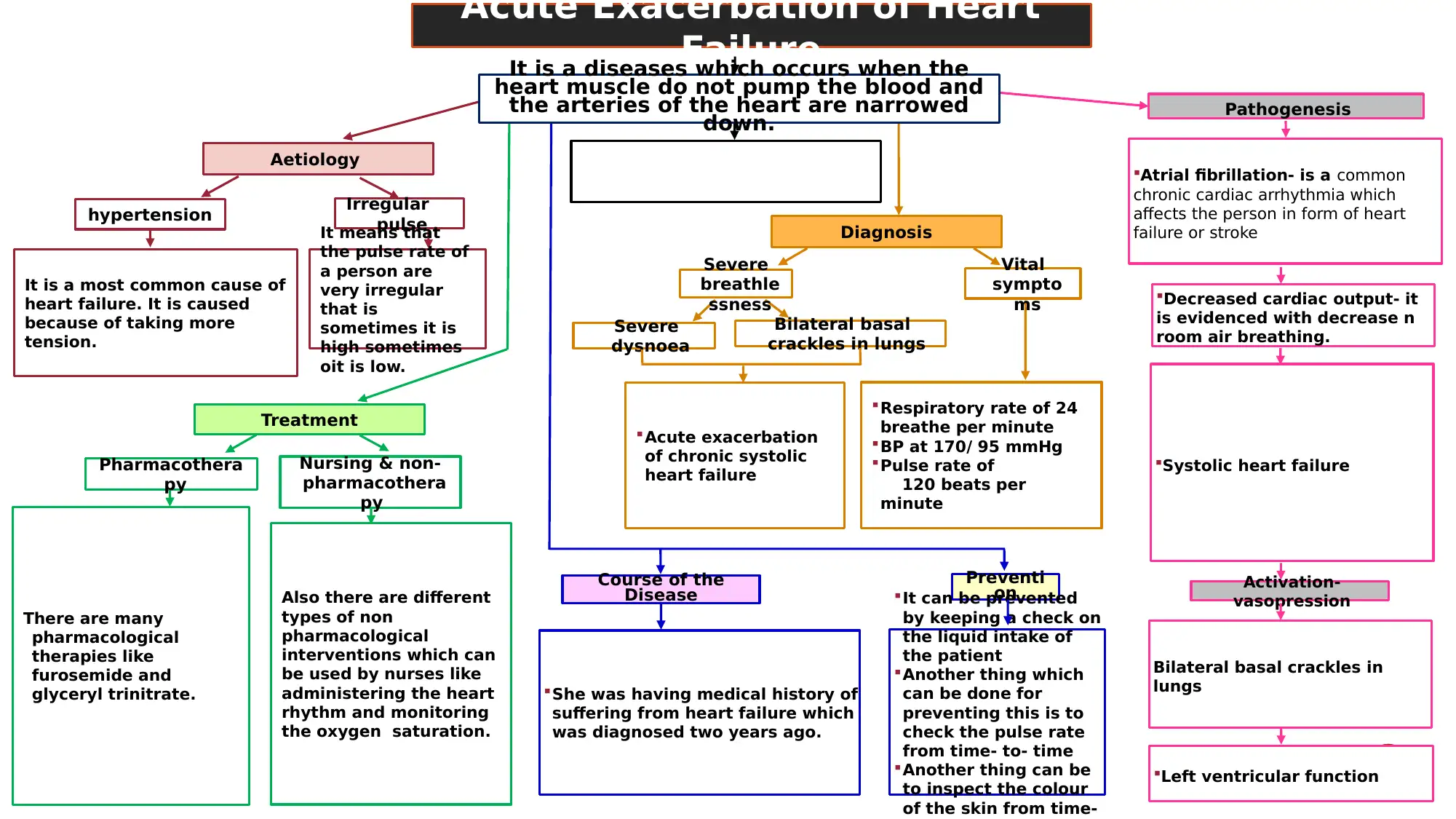Case Study: Acute Exacerbation of Chronic Systolic Heart Failure
VerifiedAdded on 2023/01/19
|1
|283
|54
Report
AI Summary
This report addresses the acute exacerbation of chronic systolic heart failure, focusing on a case study of a 78-year-old female, Mrs. Brown. It begins with a concept map outlining the causes, pathogenesis, clinical manifestations, diagnostic procedures, management, course, prognosis, and prevention of systolic heart failure. The report then delves into the underlying pathophysiology of the clinical manifestations, particularly severe breathlessness, bilateral basal crackles, and other vital signs. It discusses two high-priority nursing strategies, such as administering oxygen and monitoring vital signs, providing evidence-based rationales for each intervention. Finally, it examines the mechanism of action of IV Furosemide and sublingual Glyceryl Trinitrate and relates these to the underlying pathogenesis of an acute exacerbation of chronic systolic heart failure. The report incorporates six recent, relevant references, including journal articles and evidence-based resources, to support the analysis and recommendations.







![[object Object]](/_next/static/media/star-bottom.7253800d.svg)